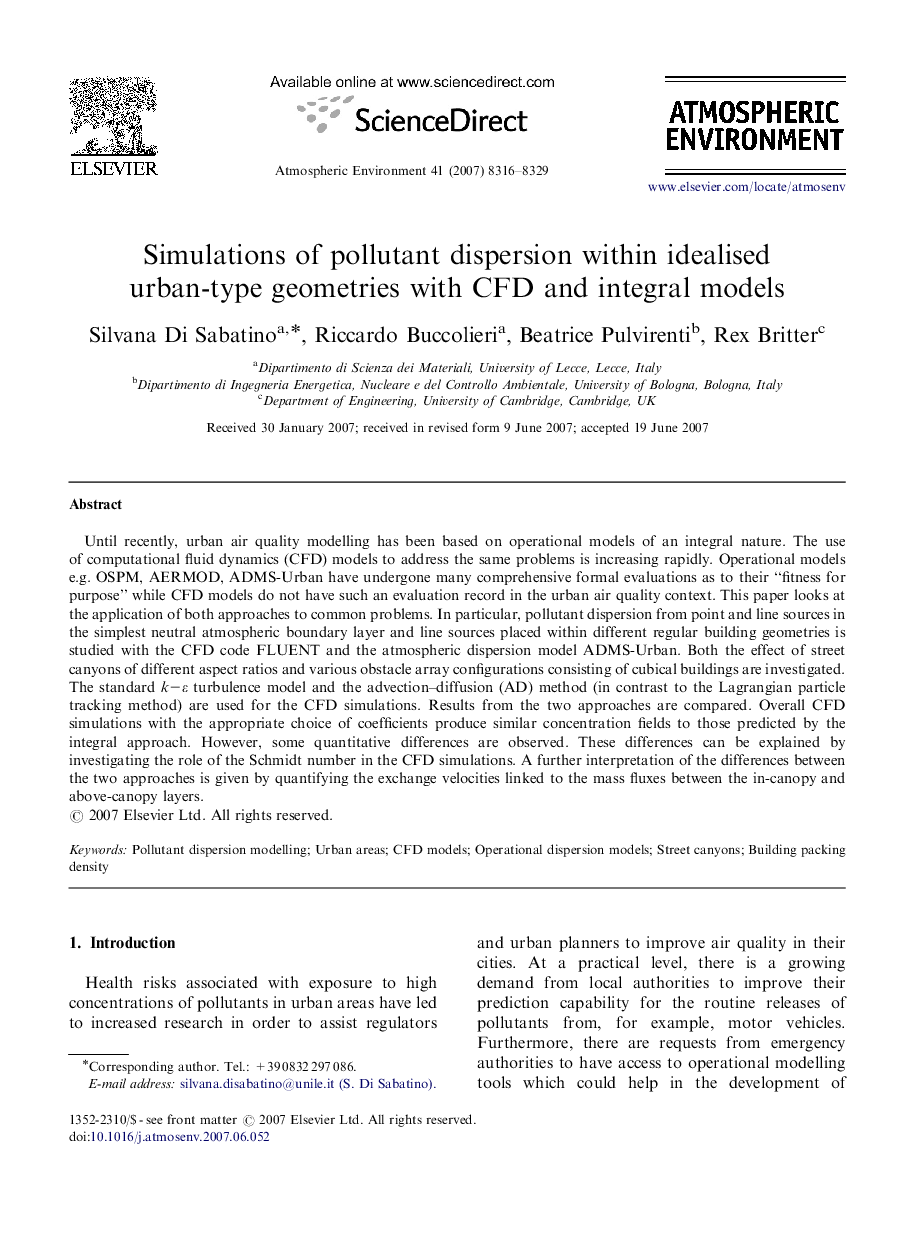| Article ID | Journal | Published Year | Pages | File Type |
|---|---|---|---|---|
| 4442982 | Atmospheric Environment | 2007 | 14 Pages |
Until recently, urban air quality modelling has been based on operational models of an integral nature. The use of computational fluid dynamics (CFD) models to address the same problems is increasing rapidly. Operational models e.g. OSPM, AERMOD, ADMS-Urban have undergone many comprehensive formal evaluations as to their “fitness for purpose” while CFD models do not have such an evaluation record in the urban air quality context. This paper looks at the application of both approaches to common problems. In particular, pollutant dispersion from point and line sources in the simplest neutral atmospheric boundary layer and line sources placed within different regular building geometries is studied with the CFD code FLUENT and the atmospheric dispersion model ADMS-Urban. Both the effect of street canyons of different aspect ratios and various obstacle array configurations consisting of cubical buildings are investigated. The standard k–εk–ε turbulence model and the advection–diffusion (AD) method (in contrast to the Lagrangian particle tracking method) are used for the CFD simulations. Results from the two approaches are compared. Overall CFD simulations with the appropriate choice of coefficients produce similar concentration fields to those predicted by the integral approach. However, some quantitative differences are observed. These differences can be explained by investigating the role of the Schmidt number in the CFD simulations. A further interpretation of the differences between the two approaches is given by quantifying the exchange velocities linked to the mass fluxes between the in-canopy and above-canopy layers.
